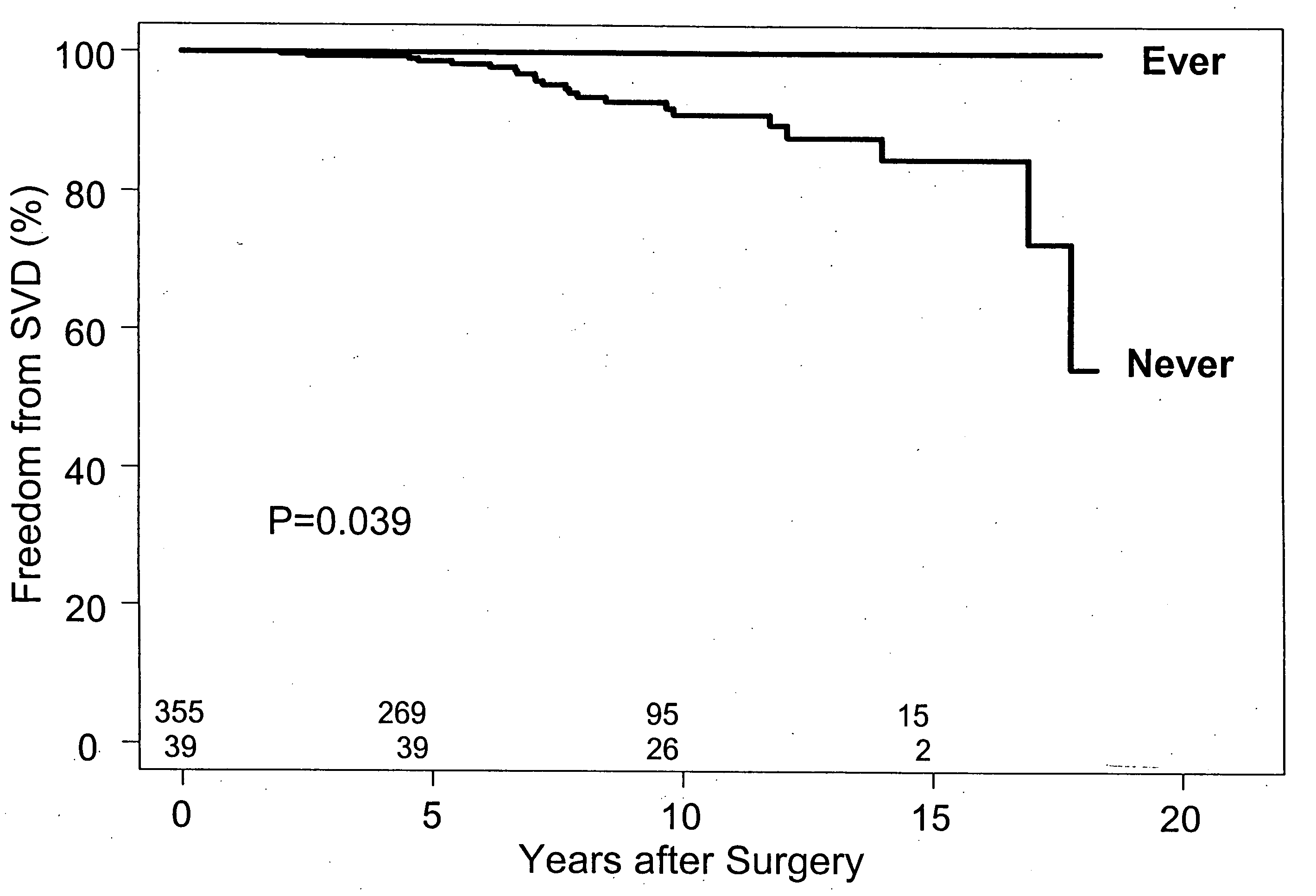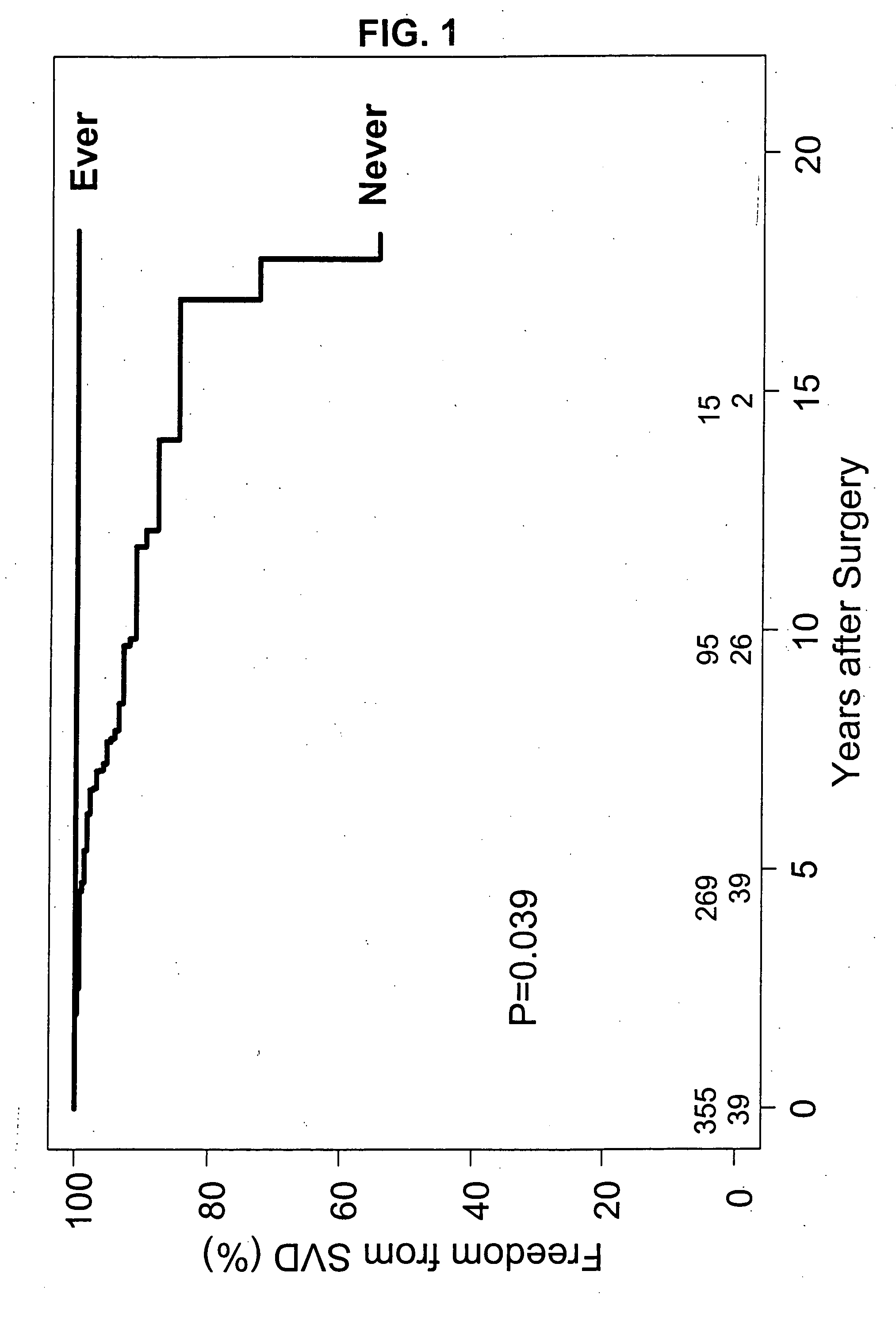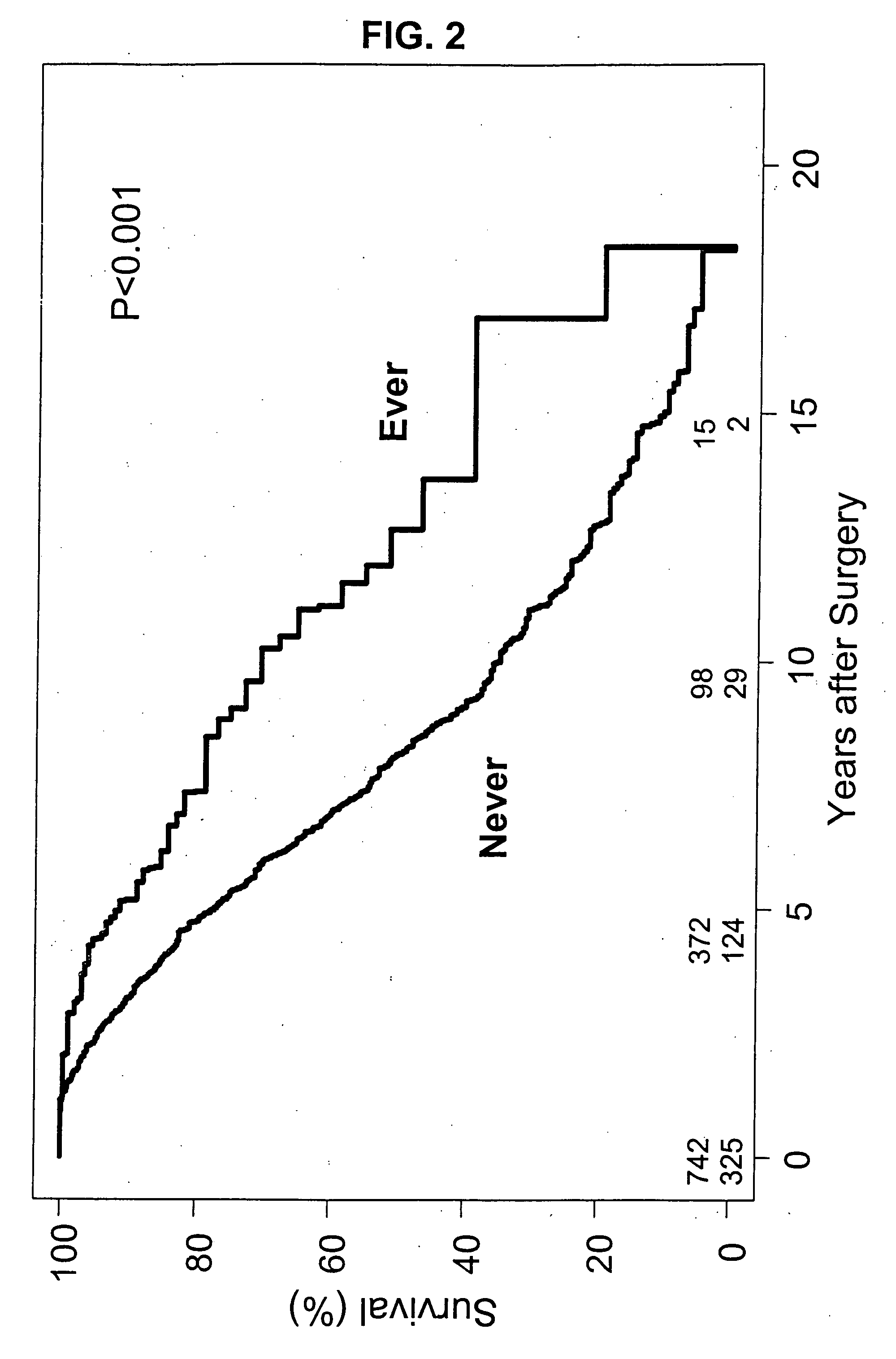Method for decreasing bioprosthetic implant failure
- Summary
- Abstract
- Description
- Claims
- Application Information
AI Technical Summary
Benefits of technology
Problems solved by technology
Method used
Image
Examples
Embodiment Construction
Bioprosthetic implants exhibit physiologic central flow with less gradients than mechanical valves. They are also less thrombogenic and exhibit a reduced need for anficoagulation. However, bioprosthetic valves are less durable. They are prone to tissue calcification and degeneration, especially in younger patients, and require frequent need for higher mortality re-operative replacement.
It has now been ascertained that the prevention of bioprosthetic implant failure can be effected with the treatment of administration of lipid lowering drugs, i.e., statins. The failure of the bioprosthetic implants is due to a great extent to the effects of calcification. The preferred lipid lowering drugs are HMG CoA reductase inhibitors. The prevention of bioprosthetic implant calcification and failure, such as in aortic heart valves, has been hereinafter demonstrated. Furthermore, this treatment should be effective for the reduction of calcification and failure of other bioprosthetic implants s...
PUM
 Login to View More
Login to View More Abstract
Description
Claims
Application Information
 Login to View More
Login to View More - R&D
- Intellectual Property
- Life Sciences
- Materials
- Tech Scout
- Unparalleled Data Quality
- Higher Quality Content
- 60% Fewer Hallucinations
Browse by: Latest US Patents, China's latest patents, Technical Efficacy Thesaurus, Application Domain, Technology Topic, Popular Technical Reports.
© 2025 PatSnap. All rights reserved.Legal|Privacy policy|Modern Slavery Act Transparency Statement|Sitemap|About US| Contact US: help@patsnap.com



